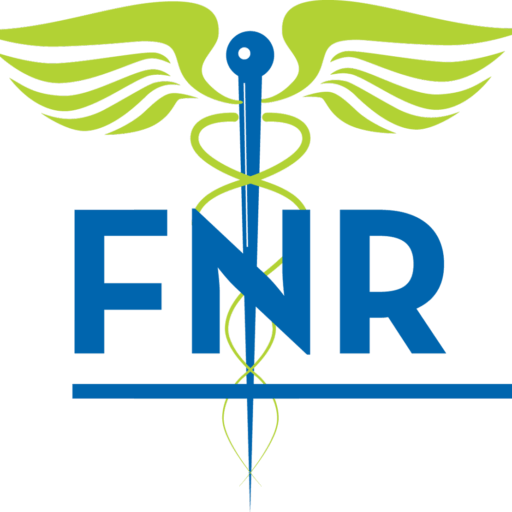The rising healthcare demands in the United States have opened doors for internationally educated nurses, especially from the Philippines. The country has long been recognized for producing highly skilled, English-proficient healthcare professionals.
The NCLEX, however, is the primary hurdle. It’s the official licensing exam you must pass to work as a registered nurse (RN) or practical nurse (PN) in the U.S.
You can take the NCLEX from the Philippines without flying to the U.S. but the process requires careful coordination across several organizations.
That’s what we’ll talk about in this article.

Step by Step Guide to Taking the NCLEX in Philippines
Here’s everything you need to do, step by step.
1. Choose the Right State Board of Nursing (BON)
Since the NCLEX is a state board exam, you must decide which U.S. state you want to get licensed in right from the start.
Some states, like California, require a Social Security Number (SSN) even to apply. Others, like New York, Illinois, and Texas, are more accessible to foreign-trained nurses because they don’t require an SSN at the start.
Check the BON’s website of your chosen state to understand their exact requirements, including education standards, credential evaluation services, and English language testing rules
2. Get Your Credentials Verified by CGFNS
Next, you need your nursing education and license verified. Most U.S. states require you to use the Commission on Graduates of Foreign Nursing Schools (CGFNS), an evaluation service accepted by the BON. Follow these steps for credentials’ verification:
- Go to https://www.cgfns.org and create an account.
- Apply for the CGFNS Credentials Evaluation Service (CES) Professional Report
- Provide your valid passport, nursing diploma, transcript of records (TOR), PRC license (active or inactive), and secondary school records
- Request your nursing school and PRC to send documents directly to CGFNS.
The verification process can take 2–4 months, depending on how fast your school and PRC respond.
3. Apply for Licensure with the State Board of Nursing
Once your CGFNS report or evaluation process is in progress (or completed), you can apply for licensure with your chosen state BON.
You’ll fill out an application form, upload required documents, and pay the application fee, between $100 and $200 depending on the state. Some BONs will also require you to complete a fingerprint-based background check.
Since you’re applying from the Philippines, you’ll likely be asked to submit fingerprints using a fingerprint card (like the FD-258) through a third-party channeler.
If you haven’t gained at least two years of work experience after graduating from nursing school, many state boards won’t issue you a license unless you first complete a Foreign Educated Nurses (FEN) refresher course.
Once the BON receives your application and your CGFNS evaluation, they will determine if you’re eligible for the NCLEX.
4. Register for the NCLEX Through Pearson VUE
After your BON confirms eligibility, you need to register for the NCLEX with Pearson VUE, the official testing partner for the exam. Go to www.pearsonvue.com/nclex and create an account. During registration, make sure your name matches your passport exactly because any discrepancy can lead to rejection on test day.
Select whether you’re applying for the NCLEX-RN (for registered nurses) or NCLEX-PN (for practical/vocational nurses).
Pay the NCLEX exam fee of $200. Pearson VUE will then notify your BON that you’ve registered, and they’ll wait for the BON to authorize you for testing. You won’t be able to schedule the exam until the BON sends an approval signal to Pearson VUE.
5. Wait for Your Authorization to Test (ATT)
Once your BON has approved your application and Pearson VUE confirms your registration, you’ll receive the Authorization to Test (ATT) via email.
Your ATT will include:
- Your candidate ID
- Testing validity period (usually 90 days)
- Instructions for scheduling your exam
Keep a close eye on your inbox (and spam folder). Without an ATT email, you cannot book your exam.
6. Schedule Your NCLEX Exam in the Philippines
With your ATT in hand, you can now schedule the exam. You don’t need to fly to the U.S. because Pearson VUE has an official testing center in Manila (Makati City), fully equipped for NCLEX-RN and NCLEX-PN exams.
Log in to your Pearson VUE account, select the Manila test center, and choose your desired exam date and time.
Be aware that seats fill up quickly, especially during peak months (like June to August), so book early.
On the day of the exam, bring your passport and arrive at least 30 minutes early. Make sure your passport is not expired and matches the details you used during registration. No other ID is accepted.
7. Maximize Your NCLEX Prep with Feuer Nursing Review
It’s no secret that internationally educated nurses (IENs) tend to have a lower NCLEX pass rate compared to U.S.-educated nurses. According to the National Council of State Boards of Nursing (NCSBN), the pass rate for first-time IENs has historically hovered around 40–50%, while U.S. graduates pass at rates closer to 80–90%.
The difference arises due to differences in nursing curricula, limited exposure to the U.S.-style practice questions, and unfamiliarity with the new Next Generation NCLEX (NGN) format, which includes case studies and clinical judgment-focused items.
To your rescue, Feuer Nursing Review offers nursing review materials for international nurses, with simplified lectures, rationales, and test-taking strategies that align with the NCLEX’s clinical judgment framework. You will get digital review books, video lectures, live webinars, and practice questions that simulate the real test.
8. Prove English Proficiency
Finally, some state boards also require international nurses to demonstrate English language proficiency. The most commonly accepted exams are the IELTS Academic and TOEFL iBT.
For IELTS, a score of 7.0 overall (with at least 6.5–7.0 in each section) is usually the benchmark. For TOEFL, the required score typically ranges between 83 to 100. Take note that results are valid for two years. Book your test early and prepare using official materials.

Conclusion: Crush the NCLEX in Philippines with Feuer Nursing Review
Taking the NCLEX in the Philippines and making your way to a U.S. nursing career seems long and complex, but thousands of Filipino nurses have done it, and continue to do so every year. With good planning, commitment, and the right support, you can too.
One of the smartest things you can do right now is to start preparing for the NCLEX through Feuer Nursing Review. We’ve helped 125,600+ students in their journey to practice nursing in the U.S. and we’d love to help you too.
Contact us to start your NCLEX prep with Feuer Nursing Review today.






